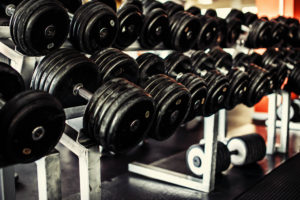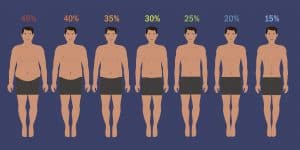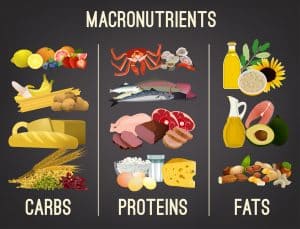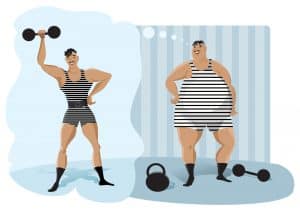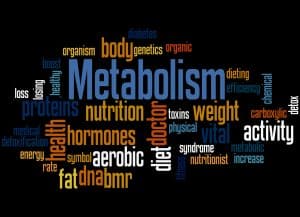So you’re in the second week of following a diet and started noticing you spend more time in the restroom than in the weight room, and things don’t come out easily… Your diet is missing fibers.
As somebody who has previously struggled during weight loss, I have often wondered about the benefits of a high fiber diet. It is generally accepted that the health benefits far outweigh other superfoods.
So why do only three percent of Americans meet their daily requirements of fiber according to USDA studies?
Maybe the problem is, like myself, many people don’t quite know which foods are high fiber foods. What is fiber anyway, are there different types, and how can we introduce more fiber into our diets?
- Table of Contents
What Is Fiber in Food and How Much Should We Consume?
Fiber is a carbohydrate found in plant foods, but don’t panic when you hear that dreaded “C” word. Most carbohydrates are broken down by the body into sugar molecules, but fiber cannot be broken down and passes through your body undigested.
Being non-digestible, fiber is very low in calories and as it moves down the digestive tract can do things that positively impact our health. Higher fiber consumption has been linked with a 15 to 30 percent decrease in all-cause and cardiovascular mortality.
So why aren’t we all eating more fiber or at least meeting the daily recommendations?
The Recommended Daily Amount (RDA) of Fiber
Current government dietary guidelines recommend a daily intake of 25 grams or 30 grams of fiber for adult women or men, respectively. That doesn’t sound too much, does it? The banana I often have for breakfast must weigh about 120 grams, but only 3 grams of that is fiber, apparently.
Although 80 percent of respondents rated fiber as an important nutrient in a FoodInsight survey, over 50 percent believed steak was a good source of fiber. It’s not, by the way! How do we know which foods are highest in fiber, and which type of fiber is best?
By its very definition, fiber is only found in plant-based foods. There is no fiber present in meat, dairy, or eggs, and very little, if any, in most junk food. Therein lies the big problem—we should be eating more vegetables, beans, fruits, and whole grains.
Types of Fiber
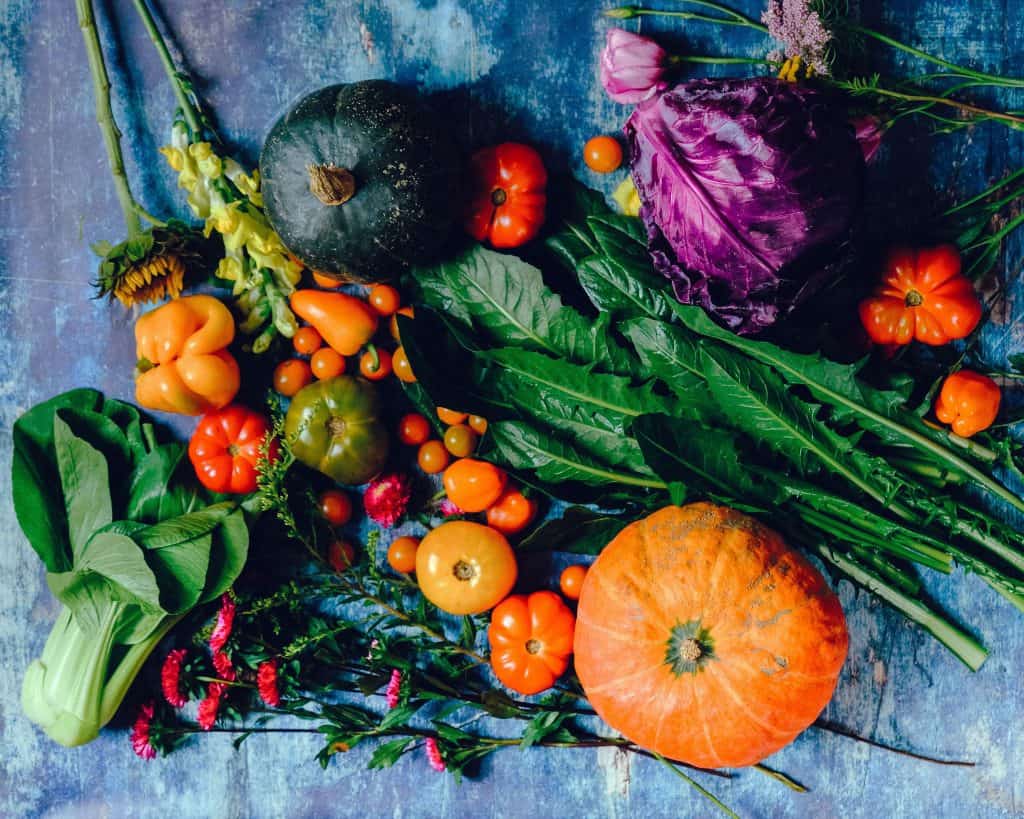
Is all fiber equal? Did you even know there are different types of fiber?
Fiber is formally classified by the Institute of Medicine as dietary fiber or functional fiber. Dietary fiber is found naturally occurring in plants while functional fiber is extracted from whole foods or synthesized and added to processed foods.
Unfortunately, this doesn’t really tell us what each type of fiber actually does. There’s very little evidence that synthesized fiber, like that which is found in supplements, offers the same benefits of naturally occurring fiber. Most supplements are sold as an aid for constipation.
A much better classification of the types of fiber is soluble or insoluble fiber. This tells us more about how the fiber behaves and the effects it has on our health.
1
Soluble Fiber
Soluble fiber, as the name suggests, attracts water and blends with it to form a gel-like substance. This type of fiber can help lower glucose levels, reduce blood sugar spikes, and also helps lower cholesterol. Foods which include soluble fiber include nuts, beans, lentils, apples, blueberries, and oatmeal.
Soluble fibers which form a thicker gel when blended with water are known as viscous fiber and slow down the digestive system. The reduced absorption of nutrients will result in a longer feeling of fullness and reduced appetite.
A systematic review of the effects of fiber on satiety and food intake found only viscous fiber had any significant effect.
2
Insoluble Fiber
Yes, you’ve guessed it, insoluble fiber is the type of fiber which repels water. While passing through the digestive system, insoluble fiber remains mostly intact and acts as a “bulking” agent.
Also known as the “roughage” type of fiber, insoluble fiber promotes regularity, adds bulk to your stool, and helps prevent constipation. Foods containing insoluble fibers include wholegrain foods, like whole wheat pasta or bread, brown rice, wheat bran or veggies like carrots, cucumbers, and tomatoes.
There are no official recommendations on the ratio of fibers, but most experts agree you should aim to get a quarter of your daily fiber from soluble fibers.
3
Fermentable Fibers
To make matters even more confusing, there is another subclass of fiber which can be digested, or fermented. As fiber passes through the human body and can’t be digested, it reaches the large intestine mostly intact.
In the intestine, that friendly gut bacteria you have probably heard mentioned before, digests or ferments the fiber to use as fuel. In turn, the number and balance of friendly gut bacteria increase, along with short-chain fatty acids and their powerful health benefits.
These friendly bacteria play various roles in blood sugar control, weight management, immunity, mental health, and brain function. They are crucial to the optimal health of a human and often referred to as the forgotten organ.
Benefits of High-Fiber Diet
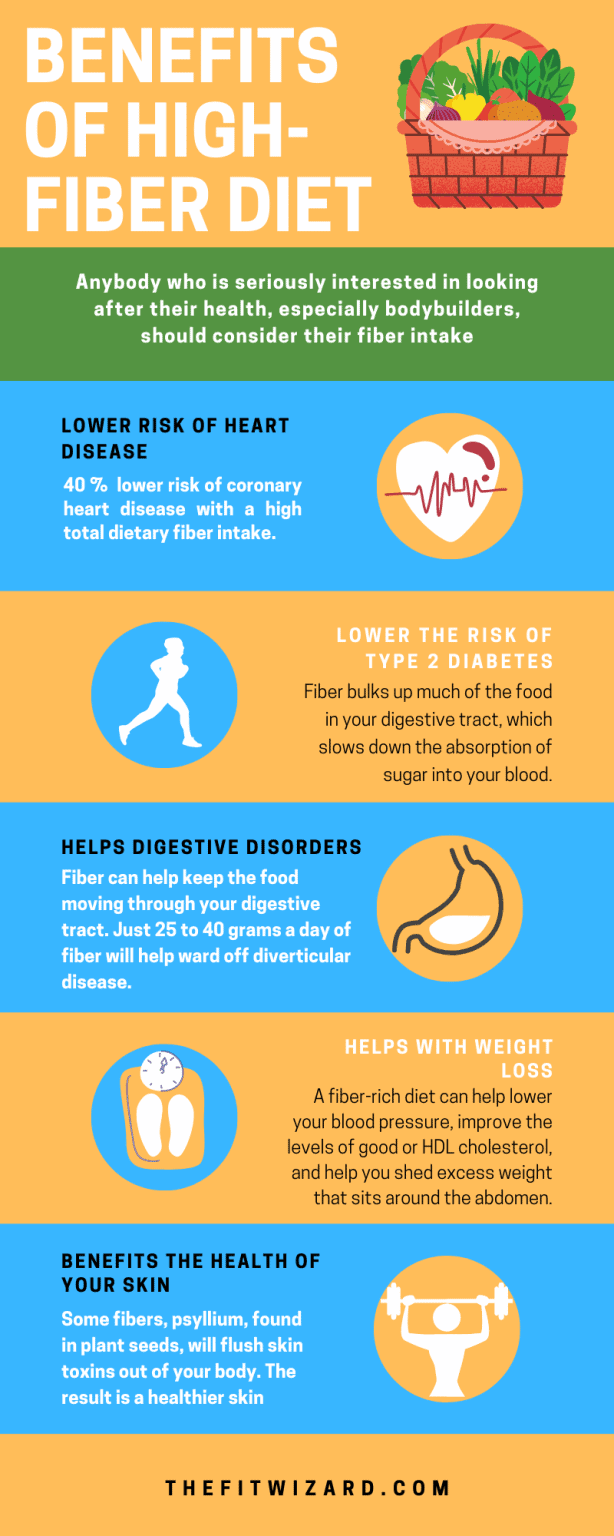
So, we have looked at the different types of fiber and the fact you get them from plant foods, but what exactly are the benefits? Basically, they make you live longer. Anybody who is seriously interested in looking after their health should consider their fiber intake.
1
Lowers the risk of Heart Disease
Let’s start with perhaps the most important organ in your body, the heart. A lower risk of heart disease has been linked to a high intake of fiber in various large studies which have followed patients for many years.
A Harvard study of over 40,000 male health professionals found a 40 percent lower risk of coronary heart disease with a high total dietary fiber intake.
Higher fiber intake can also lower the risk of metabolic syndrome, with factors that can add to the risk of developing heart disease or diabetes. A fiber-rich diet can help lower your blood pressure, improve the levels of good or HDL cholesterol, and help you shed excess weight that sits around the abdomen.
2
Lowers the risk of Type 2 Diabetes
Diets which are high in fiber, especially insoluble fiber from cereals, can help lower the risk of developing type 2 diabetes. Fiber expands and bulks up much of the food in your digestive tract, which slows down digestion and absorption of sugar into your blood.
3
Helps the Digestive Disorders
Think of fiber as nature’s very own scrubbing brush, which goes through your body, clearing the pipes and reducing any carcinogenic issues.
One of the most common age-related disorders of the colon is diverticulitis or inflammation of the colon. Fiber can help keep pouches of the colon clear of food and keep the food moving through your digestive tract. Just 25 to 40 grams a day of fiber will help ward off diverticular disease.
Soluble fiber and insoluble fiber can also help prevent colon cancer and other digestive system cancers like stomach, pharynx, or even mouth cancer.
4
Helps with Weight Loss
A popular weight loss plan in the 1980s was the F-Plan diet, by British author Audrey Eyton. The theory was that a high intake of dietary fiber would fill you up with a bulk of food without high calories.
Although research backs that up, there are also many other ways a high-fiber diet can help with your weight loss:
- Fiber regulates your blood sugar levels, which helps your body maintain its fat burning capacity. Fiber also helps avoid those insulin spikes which often leave you feeling drained or craving junk food.
- Eating more fiber will move the fat through your digestive system quicker, giving it less chance to be absorbed.
- Some high-fiber foods are also rich in protein, like lentils, kidney beans, and broccoli, which will help in the muscle building process.
- High-fiber foods have higher volume than low fiber foods for the same mass, which will fill you up more quickly.
5
Benefits the Health of your Skin
One of the things often overlooked when talking about the health benefits of fiber is the health of your skin. Yeast and fungus which are excreted through your skin will often cause outbreaks of acne.
Some fibers, especially psyllium, found in plant seeds, will flush those toxins out of your body. The result is a healthier and improved appearance of the skin. I would have eaten my morning cereal more happily had I known that as a teenager!
Risk of Skipping Fiber or Having Too Little of It
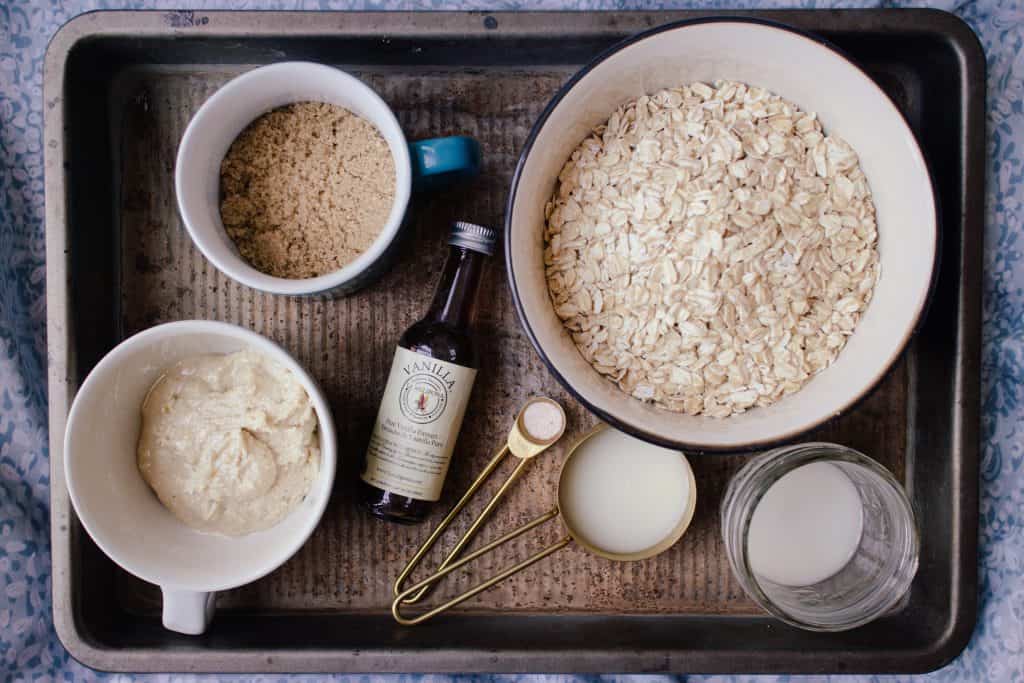
Not eating enough fiber over a shorter period won’t have too much of a negative impact on your health. Unfortunately, a low-fiber diet will have a more serious impact on your overall health in the long term.
Dietary fiber plays a key role in the balance of microbes in your gut, with lower fiber leading to less of these microbes.
A disturbance to the healthy bacteria or microbe population in your intestine will lead to potential problems in the gastrointestinal tract. This can include irritable bowel syndrome, celiac disease and other issues, such as obesity, cardiovascular disease, metabolic syndrome, allergies, and asthma.
Low-Fiber Diets
There will be very occasional times when people are required to follow a low-fiber diet. Normally, when undergoing chemotherapy, radiation, or surgery, you will need to give your intestinal tract a rest.
Patients who suffer from Crohn’s disease, inflammatory bowel syndrome, or ulcerative colitis will also sometimes need to maintain low-fiber diets for longer periods. They should avoid any high-fiber foods which make the intestinal tract work harder.
If in doubt whether you need to follow a low-fiber diet, it is always advisable to seek the advice of a healthcare professional.
25 Food Source of High-Fiber Diet
So how do we know how much fiber is in each food? Although there are many online resources, here’s a list of 25 high-fiber foods and their fiber contents, to start you off:
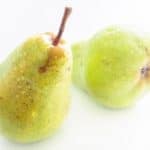
Pears:
5.5 grams in a medium (148 gram) pear

Strawberries:
3 grams in one cup or 2 grams per 100 grams
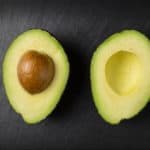
Avocados:
10 grams in one cup or 6.7 grams per 100 grams
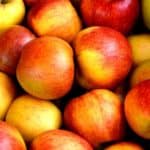
Apples:
4.4 grams per medium sized apple
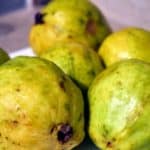
Guavas:
3 grams per one guava
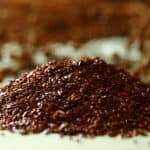
Flaxseeds:
3.5 grams per tablespoon

Raspberries:
8 grams in one cup or 6.5 grams per 100 grams

Bananas:
3.1 grams in a medium banana, or 2.6 grams per 100 grams

Carrots:
3.6 grams per cup or 2.8 grams per 100 grams
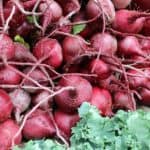
Beets:
3.8 grams per cup or 2.8 grams per 100 grams

Broccoli:
2.4 grams per cup or 2.6 grams per 100 grams
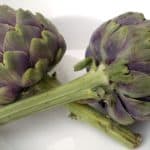
Artichoke:
10.3 grams in one average size artichoke, or 8.6 grams per 100 grams
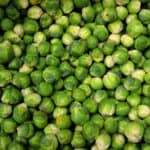
Brussel Sprouts:
4 grams in one cup, or 2.6 grams per 100 grams
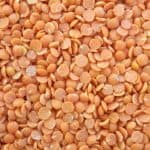
Lentils:
15.6 grams per cup of cooked lentils

Kidney Beans:
11.3 grams per cup of cooked beans
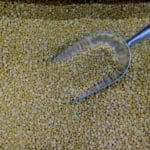
Split Peas:
16.3 grams per cup of cooked peas
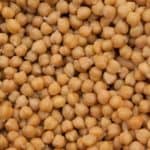
Chickpeas:
12.5 grams per cup of cooked chickpeas

Quinoa:
5.2 grams per cup of cooked quinoa
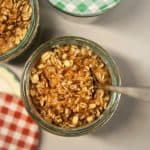
Oats:
16.5 grams per cup of raw oats

Popcorn:
1.2 grams per cup of popped corn kernels
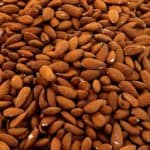
Almonds:
3.4 grams per one ounce serving
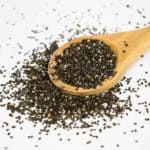
Chia Seeds:
10.6 grams per one ounce

Sweet Potatoes:
One medium-sized boiled sweet potato equals 3.8 grams of fiber

Dark Chocolate:
3.1 grams in a one-ounce chunk
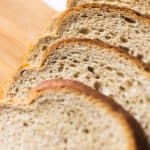
Whole wheat bread:
1.9 grams per single slice (28 grams)
All the above dietary figures are for information purposes only and courtesy of https://nutritiondata.self.com.
Tips to Add More Fiber to Your Diet
Looking at the list above, you may think we are suggesting going vegetarian to meet your daily fiber requirements. It’s true that vegetarians and vegans do eat more fiber than those of us who eat meat and plants.
However, there are simpler ways of boosting the fiber content of your diet without giving up meat.
- I enjoy my bacon far too much to give it up, but just adding two thick slices of toasted whole wheat bread could add 6.5 grams of fiber—not a bad start to the day!
- A small handful of nuts can provide up to 3 grams of extra fiber as a mid-morning snack. Nearly 10 grams of fiber before lunch can also prevent you from snacking on the chocolate bars in the office vending machine.
- Choosing potatoes (especially sweet potatoes) that are cooked with their skins on, and swapping white bread, pasta, and rice for wholemeal versions will also help. Try throwing some legumes, beans, or lentils in a casserole or over a salad, and eat at least five portions of fruit or vegetables per day.
The International Foundation for Gastrointestinal Disorders includes some helpful tips on adding fiber to your diet, which can be found here.
A Warning on Too Much Fiber, Too Soon
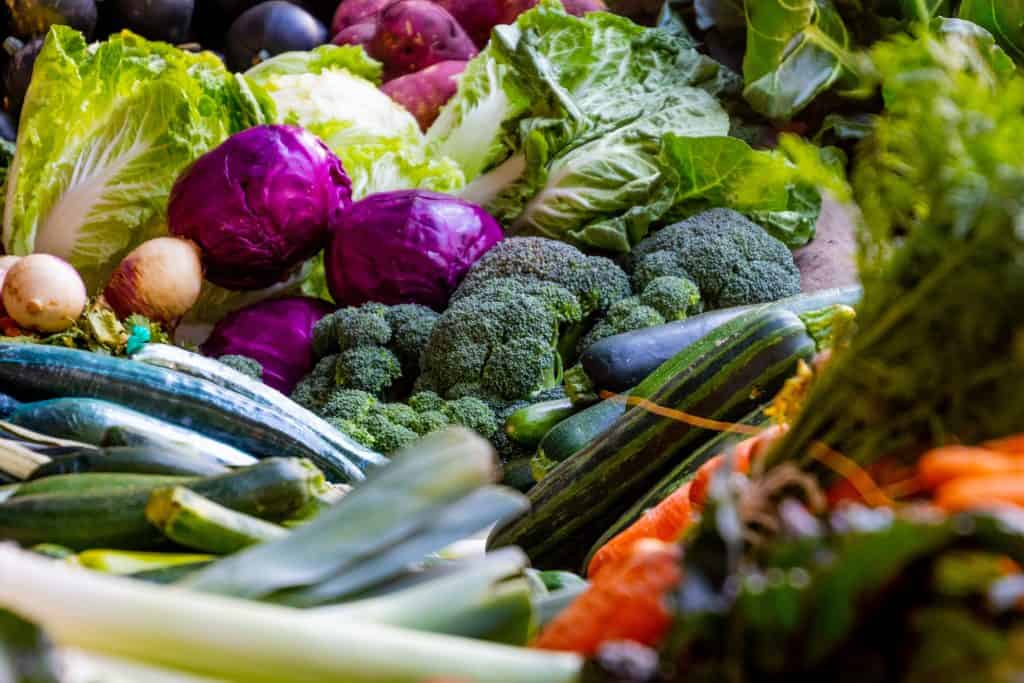
As with most things which are good for you, moderation is the key. When trying to increase your fiber consumption, do it gradually. As you introduce more dietary fiber to your diet, your digestive system will need time to adjust to the change.
Adding too much fiber too quickly may cause abdominal bloating and cramping, or intestinal gas. One of the side effects as fermentable fibers are digested or fermented by the healthy gut bacteria is the release of gas. This can often lead to trapped wind or flatulence.
Drinking plenty of water can also help your body adjust to the increased levels of fiber, with fiber working best when it absorbs water. This can help move the fiber through the intestinal tract and make your stools soft yet bulky.
What About Supplements?
Before you start reaching for a fiber supplement, consider that fiber is found naturally in many nutritious foods. Maybe you struggle to eat more vegetables, or just don’t really like the taste of greens. You can always hide them in a sauce, or just add some fruit to yogurt.
A comparison study recently found that many fiber supplements or fiber-enriched foods don’t offer the same benefits of naturally occurring dietary fiber. For one, you will be left hungry and not have that feeling of fullness you get from whole foods.
Most fiber supplements are aimed at relieving constipation or digestive issues, without offering the other benefits. Foods which are naturally high in fiber will also normally be higher in other nutrients too, which can be more beneficial to your health.
Summary
If you are serious about your well-being, you really need to think about how much fiber you are getting every day. The fact that fiber and whole foods, including grains, fruits, and vegetables, are good for you shouldn’t come as too much of a surprise.
Unfortunately, there is a concern with all the popularity of low-carb diets, that people are forgetting the value of fiber. The study we mentioned earlier, published in the Lancet, was actually carried out to help the World Health Organization come up with their official guidelines, due to be published later this year.
Why not beat the guidelines and increase your fiber intake before it’s being preached by everybody? Just a few bits of pineapple in your protein shake or an extra cup of nuts with your beer could be enough to kick-start your fiber boost.




